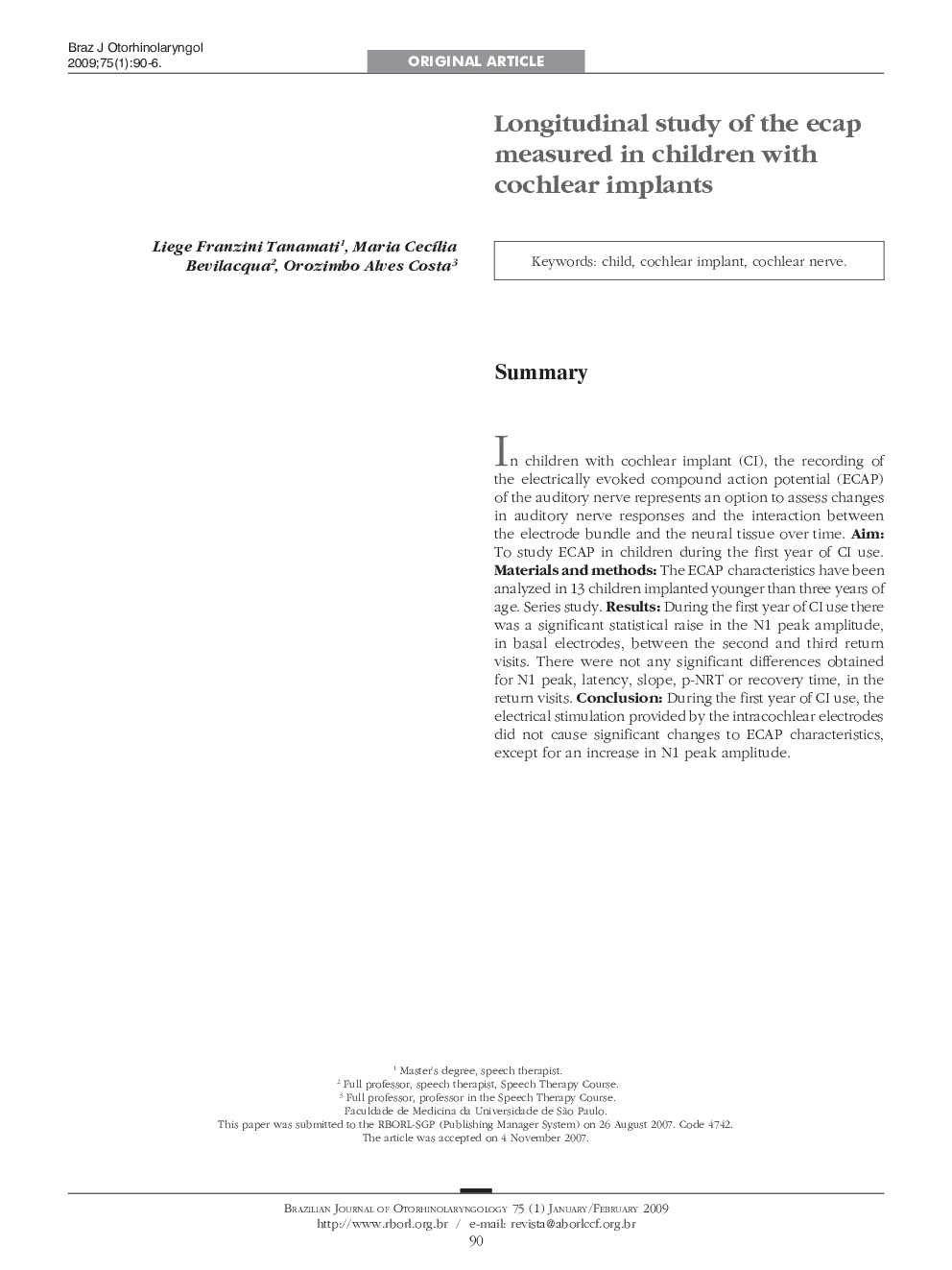| Article ID | Journal | Published Year | Pages | File Type |
|---|---|---|---|---|
| 4107682 | Brazilian Journal of Otorhinolaryngology | 2009 | 7 Pages |
SummaryIn children with cochlear implant (CI), the recording of the electrically evoked compound action potential (ECAP) of the auditory nerve represents an option to assess changes in auditory nerve responses and the interaction between the electrode bundle and the neural tissue over time. Aim: To study ECAP in children during the first year of CI use. Materials and methods: The ECAP characteristics have been analyzed in 13 children implanted younger than three years of age. Series study. Results: During the first year of CI use there was a significant statistical raise in the N1 peak amplitude, in basal electrodes, between the second and third return visits. There were not any significant differences obtained for N1 peak, latency, slope, p-NRT or recovery time, in the return visits. Conclusion: During the first year of CI use, the electrical stimulation provided by the intracochlear electrodes did not cause significant changes to ECAP characteristics, except for an increase in N1 peak amplitude.
